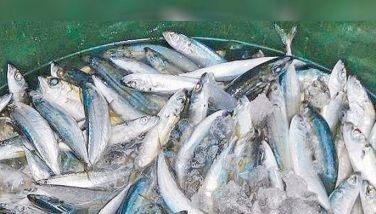El Niño phenomenon leaves hundreds of people dead
MANILA, Philippines – The El Niño phenomenon brought drought and destructive cyclones to the Philippines this year, leaving scores of people dead and billions of pesos in damage mostly in the agriculture sector.
El Niño refers to the abnormal warming of the Pacific Ocean and is associated with below normal rainfall.
As of Nov. 30, four provinces were still affected by drought – Quezon, Camarines Norte, Northern Samar and Samar.
Drought refers to three consecutive months of “way below normal” rainfall or less than 60 percent less than average rainfall.
The Philippine Atmospheric, Geophysical and Astronomical Services Administration (PAGASA) said the El Niño episode is expected to last until June 2016.
Anthony Lucero, officer-in-charge of the Climate Impacts Monitoring and Prediction section of PAGASA, confirmed that the drought that hit several areas in the country this year and the strong typhoons were caused by El Niño.
“Compared to other strong El Niño events, the impact this year may be milder,” Lucero told The STAR.
He, however, could not say if the country has already experienced the worst of El Niño. “It’s too early to conclude.”
The next El Niño update is expected to be released by PAGASA on Jan. 6.
A total of 15 tropical cyclones entered the country so far this year, lower than the average 19 to 20 cyclones that enter the Philippines annually.
The country experienced 11 tropical cyclones in 2010, 19 in 2011, 17 in 2012, 25 in 2013 and 19 in 2014. It was in 2007 when the country last experienced 15 tropical cyclones.
Nona
Typhoon Nona, the 14th tropical cyclone to enter the country this year and the first weather disturbance this month, left at least 41 people dead and damage worth P4.9 billion, according to the National Disaster Risk Reduction and Management Council.
On the other hand, rains from Nona (international name Melor) filled up major dams in Luzon, including Angat Dam in Bulacan, which supplies 97 percent of Metro Manila’s water demands.
Early this year, Angat’s water level hit its 180-meter critical level for irrigation due to lack of rain, forcing the National Water Resources Board (NWRB) to lower the allocation for Metro Manila.
Lando
The amount of damage due to Typhoon Lando reached P9.8 billion and left 47 people dead.
But after Lando passed through Luzon last October and significantly increased the water level of Angat Dam, the NWRB raised last month the allocation for Metro Manila from 36 cubic meters per second last October to 38 cubic meters per second last month.
PAGASA has decommissioned the name Lando from the list of typhoons due to the major damage on lives and property. The agency is also set to decommission the name Nona.
The weather bureau has been decommissioning “extraordinarily destructive storms” since February 1979.
There are four sets of names of tropical cyclones, used one set per year. On the fifth year, it goes back to the first set. An auxiliary list is used in case the number of tropical cyclones within the year exceeds 25.
- Latest
- Trending




























